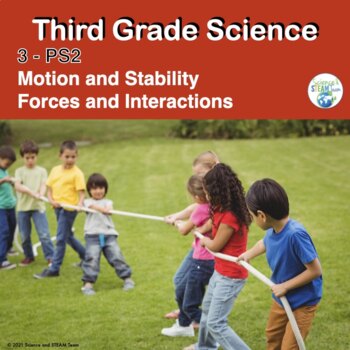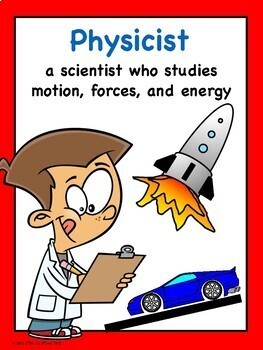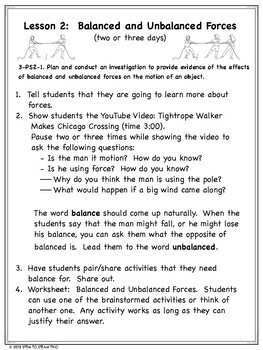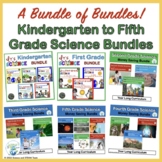Third Grade Science: Motion, Stability, Forces and Interactions Unit
- PDF
- Easel Activity
What educators are saying
Also included in
- Do you need a science curriculum that is aligned to the NGSS?This 3rd-grade science bundle fits the bill!. We have researched each standard, so nothing goes untaught.It comes with:- The Standards and Lists of Materials needed (all inexpensive, practical suggestions)- 23 Detailed Lesson Plans- 68 EsPrice $37.50Original Price $43.23Save $5.73
- Are you looking for a teacher-friendly elementary science curriculum? This Next Generation Science resource will save you so much time and make planning your science lessons a snap! SAVE LOTS OF TIME, ENERGY, and MONEY when you buy this BUNDLE! All the ideas you need to teach Kindergarten to ThirdPrice $160.00Original Price $191.50Save $31.50
- Thanks so much for spreading the joy of science! Enjoy these resources!Price $168.70Original Price $293.50Save $124.80
- Do you need help implementing the Next Generation Science Standards?Do you need a science curriculum that is aligned to the NGSS?This kindergarten through fifth-grade science bundle of units fits the bill! We have researched each standard, so nothing goes untaught.It includes detailed lesson plansPrice $205.45Original Price $293.50Save $88.05
Description
Do you need a science curriculum that is aligned to the NGSS?
- This 3rd-grade physical science unit fits the bill!. We have researched each standard, so nothing goes untaught.
- It comes with:
- 9 detailed lessons, so you can reclaim your nights and weekends.
Lesson 1 - Force and Motion
Lesson 2 - Balanced and Unbalanced Forces
Lesson 3 - Energy Transfer
Lesson 4 - Gravity
Lesson 5 - Friction and Air Resistance
Lesson 6 - Magnetic Force
Lesson 7 - Electrostatic Force
Lesson 8 - Start Your Engines
Lesson 9 - Design Challenge Using Magnets
✅Please make sure that you have access to YouTube before purchasing this unit.
- Included within this resource are:
- the standards
- suggested YouTube Videos and Books
- Physicist Poster
* KLEWS Chart (KWL for Science)
- Energy Transfer Poster
- student worksheets for collecting data and recording observations
- push or pull task cards
- Simple Experiments for energy transfer and gravity
- Friction Experiment
- Paper Drop Experiment
- Magnet Stations and Recording Booklet
* Soda Can and Water Bending Experiments
STEM Activity *Start Your Engines Activity
- Maglev Trains Reading
* Forces and Motion Posters
* Forces and Motion Mini Booklet
- 20 colorful essential vocabulary cards with graphics and definitions
* Indicates other Science and STEAM Team resources that have been included in this unit.
Related Products
⭐ Third Grade NGSS 3-LS1, 3-LS2, 3-LS3, and 4-LS4: Life Science Unit
⭐ Car Engineering Challenge Using Building Bricks
⭐ Data Collection and Graphing for Second and Third Grade
⭐ Famous People in the Area of STEAM Posters for Elementary Grades
⭐ STEAM Challenges for the Whole Year Money Saving Bundle
⭐ STEM / STEAM Lab Materials Request Letter
Customer Tips:
How to get TpT credit to use towards future purchases:
*Please go to your My Purchases page (you need to login). Next to each purchase, you’ll see a Provide Feedback button. Click that and you will be taken to a page where you can give a rating and leave a short comment about the product. Each time you give feedback, TpT gives you credit that you can use towards your future purchases.










